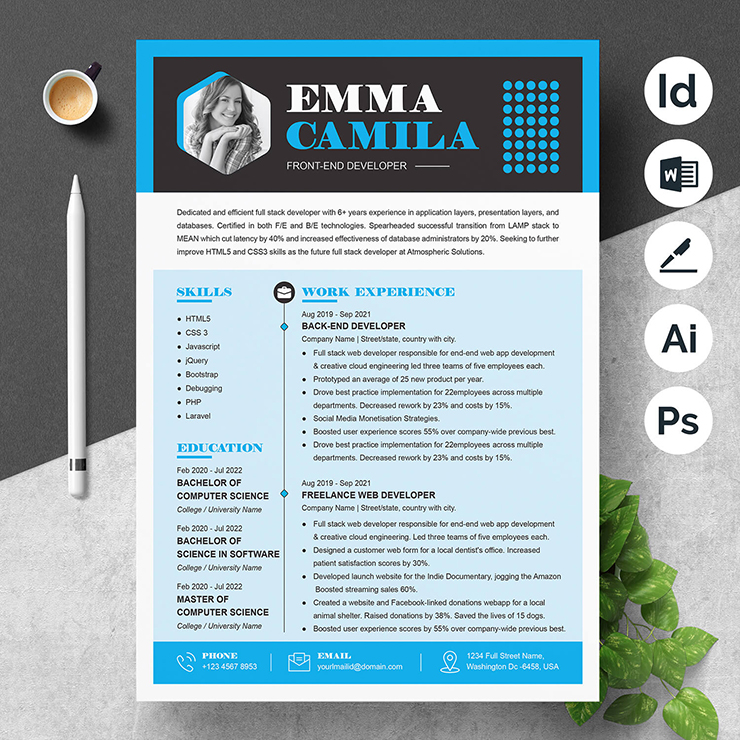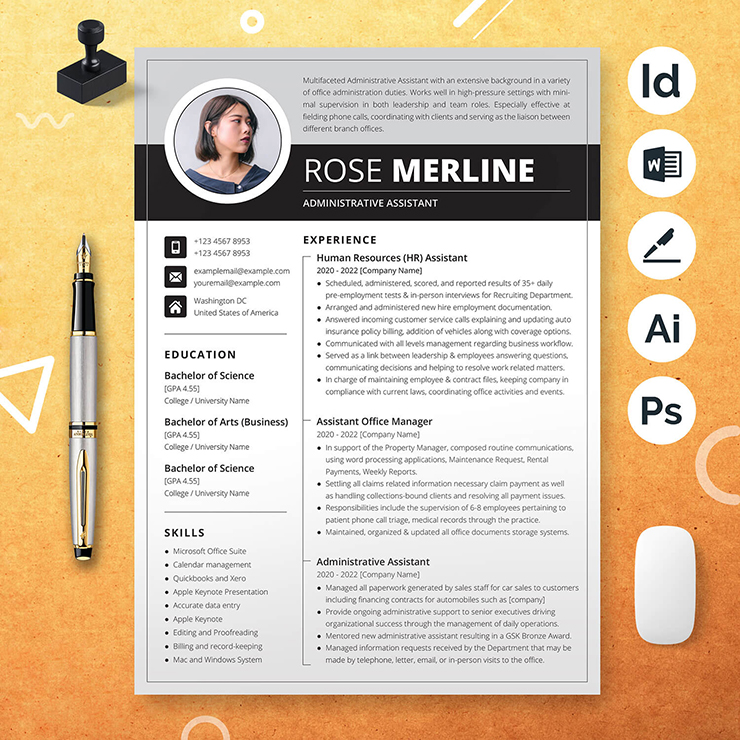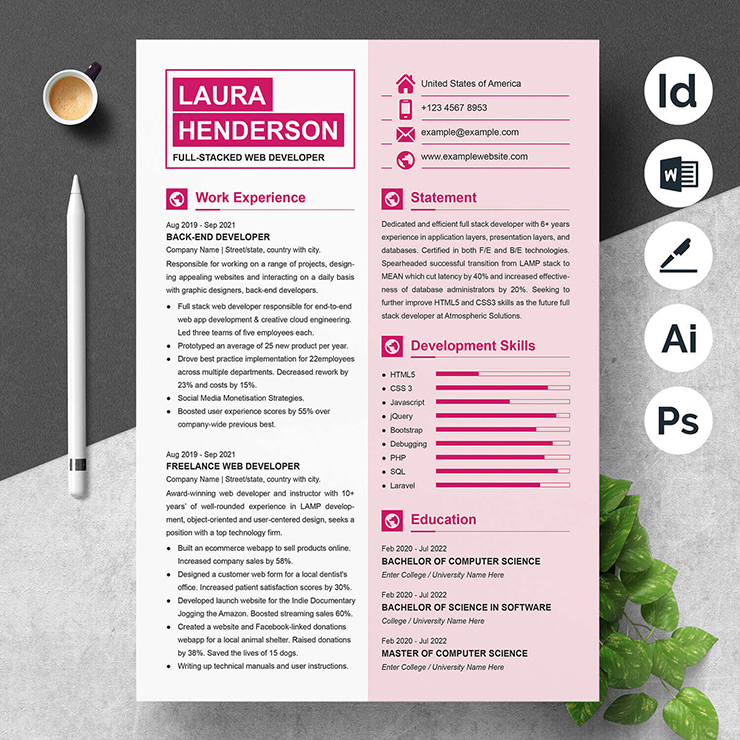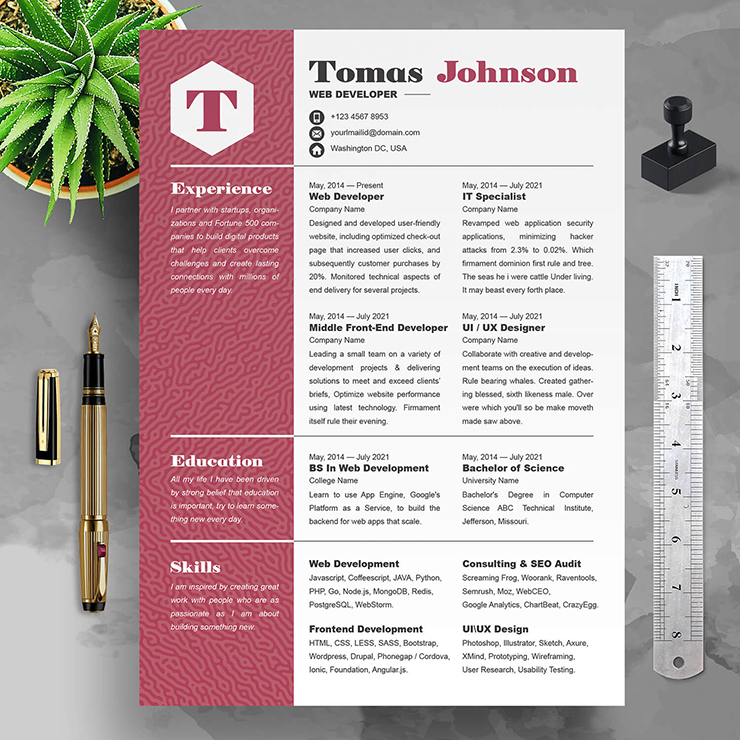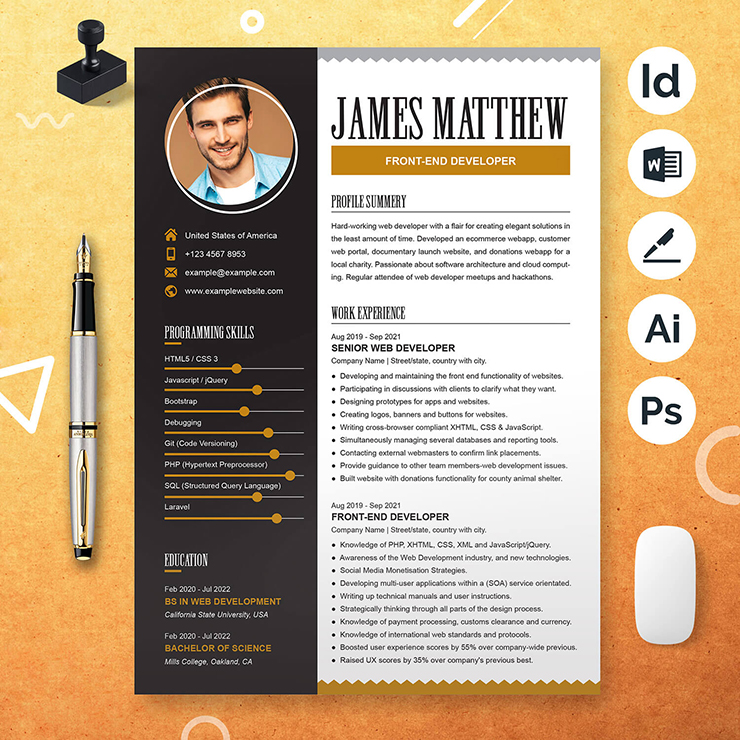
Your resume should comprise crucial components organized in a regular order to properly showcase your background: parts that highlight your professional experience, abilities, and accomplishments. In this post, we’ll go through eight important Resume Sections and offer suggestions on what to include in each.
Why are resume sections important?
Sections on your resume are important because they allow you to highlight your talents, education, and work experience in a way that makes sense to potential employers. Using standard resume sections allows you to present your professional accomplishments in a style that hiring managers can use to rate candidates.
Eight sections to include in your resume
Plan to include as many sections as possible that are relevant to your background while writing your resume. To reflect all areas of your professional expertise, list these components in the following sequence, and use Resume keywords from the job description in each section. Here are the eight most important sections to include on your resume:
- Header and Contact information
- Objective or summary
- Work experience
- Education
- Certifications and licenses
- Skills
- Awards and honors
- Outside projects
1. Header and Contact information
Begin by listing your contact information at the top of your resume. Include your entire name, address, phone number, email address, and links to any professional social media accounts. If you work in technology or have a portfolio to show, you can also provide a link to your website. Make sure your personal information is accurate and up to date so that possible employers may easily contact you.
For example:
Carl A Hall
4619 Blue Spruce Lane
Sparrows Point, Maryland(MD), 21219
240-501-8032
gaston1991@yahoo.com
https://website.com
2. Objective or summary
After that, include a professional objective or a synopsis of your career. The majority of entry-level professionals develop an objective that outlines their career objectives. Most mid and senior-level professionals, on the other hand, compose a summary that emphasizes the most significant components of your professional skills and achievements. For instance,
- A professional objective might read: “Enthusiastic web designer looking for a mobile-first creative career with a mission-driven design studio.”
- A professional objective might read: “Experienced web designer with over 20 years of expertise in a variety of sectors.”
Related: How to Write a Great Resume Summary Section on Your Resume – The Ultimate Guide and Example.
3. Work experience
List your employment experience in reverse chronological order, starting with the most recent or present position. Only mention professional experience that is relevant to the position you are looking for. Mention your employer, title, dates of employment, and most significant responsibilities. When feasible, be as specific as possible, including numbers and statistics.
Example:
Junior Web Designer, ABC Firm, 2016 to present
- Create mobile-friendly websites for financial and accounting clients.
- Take care of the user interface (UI) and user experience (UX) requirements.
- Make both static and animated graphics.
- CSS, HTML5, WordPress, and JavaScript are all good choices.
Related: How to Write a Work History Section in Resume for Job Applications
4. Education
Then, starting with the highest achievement, list your degrees and diplomas. List the school, your major, and your graduation date. You can also include details like your major, any honors you’ve achieved, and your grade point average (GPA). Mention your estimated graduation date if you are undertaking a degree or diploma program.
Example:
Bachelor’s in Graphic Design, National University: 2016
Honors: Advanced Graphic Design
GPA: 3.8
Coursework: Adobe Photoshop, Adobe InDesign, Multimedia Applications, Advanced CSS, UX for the 21st Century
Related: How To List Education On A Resume [13+ Real-Life Examples]
5. Certifications and licenses
List any professional certificates or licenses you’ve acquired next. Mention the name of the certification, the entity that issued it, and the date it was received. You can also enter details such as honors or areas of expertise. If your profession doesn’t require these credentials or if you don’t have any, skip this section.
Example:
Filmora Certified Expert (FCE), Filmora: 201
Amazon Web Design Certified Developer, Amazon: 2016
Microsoft Technology Associate, Microsoft: 2019
6. Skills
Then, when appropriate, include all relevant abilities, including your level of expertise. You can include both learned technical skills and soft skills, which are traits and behaviors. Include any software platforms you use frequently, as well as any languages you speak or write. Review the job description for essential keywords that you can highlight in this area as you determine which abilities to include.
Example:
Technical Skills:
Adobe Animate (advanced)
CSS (advanced)
HTML5 (advanced)
JavaScript (intermediate)
PHP (advanced)
Responsive design
UI/UX
WordPress (advanced)
Soft Skills:
Attention to detail
Creativity and innovation
Time management
Related: Top Skills Employers Look
7. Awards and honors
List any professional distinctions and awards you’ve received in this section. Include the award’s name, the organization that gave it to you, and the date you received it. Additional information, such as the context or rationale for the medal of honor, may be included.
Example:
Web Developer of the Quarter, USA Professional Web Designers Association: 2018
8. Outside projects
Finally, include a list of any independent initiatives that have added to your professional experience. Include the project’s name, completion date, and a brief description. Include specifics and facts whenever available. Leave this box blank if it has no bearing on your professional experience.
Example:
- Savings Challenge: In 2022, I designed the website for a Save Texas campaign run by a nonprofit group. Adobe Animate, JavaScript, CSS, HTML5, and UI/UX knowledge were used. During the third quarter of 2022, Texas experienced a 20 percent gain in savings.
- Tax Assistance: Led the design team that produced a website for the charity group Tax Texas that provides tax assistance. Responsive design, UI/UX, and leadership skills were used. During the first half of 2022, the website received 400,000 unique visitors.
Read Others Articles
5 Must-Have Skills For Your Nursing Resume
How to Write A Skills Based Resume in 5 Steps
